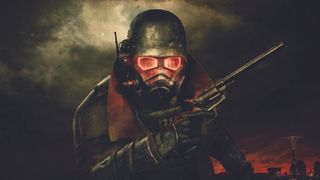
This article was originally published in PC Gamer issue 309. For more quality articles about all things PC gaming, you can subscribe now in the UK and the US.
For as long as there’s been a mod scene, people have tried to ‘restore’ parts of games that, for whatever reason, were never finished. In recent years, some of the efforts have become truly colossal. A few, like the KOTOR II Restored Content mod or the standalone Stalker: Lost Alpha, are deemed essential by some fans.
Vampire: The Masquerade—Bloodlines launched in a sorry state owing to a troubled development. Yet smitten with its ambition, fans have turned it into a beloved RPG. One fan is Werner Spahl. “I first took notice of unused assets when I installed an early version of the Unofficial Patch, at that time created by Dan Upright,” says Spahl. “When I took over from him I started looking for other lost content, especially when I became aware of how unfinished Troika was forced to release the game.”
Spahl is no stranger to the modding scene. For him it has been a lifelong hobby. “I have prior modding experience from the Atari ST days onwards, when my brother and myself created a mod of one of the first multiplayer FPS games called Midimaze Plus. Later on I made a Doom mod called Theme Doom Patch, in which you could experience Aliens, Predators and Terminators, followed by a lot of small Quake, Jedi Knight and Half-Life mods up to Xen Warrior, in which you play as an alien grunt.”
I cannot recall a time when a discussion of Vampire: The Masquerade – Bloodlines didn’t also include mention of the Unofficial Patch, a mod that not only makes the game vastly more playable but can, optionally, bring in a load of planned or unused content. A chemist by day, Spahl has been working on the mod for over ten years now. “I do it as a hobby, it’s never been a full-time job.”
That a game’s good reputation largely rests solely on the effort of hardworking fans dedicated to making it playable and complete, is a tremendous compliment to the work put in by Spahl.
Yet even games that launched to huge success and were packed full of content still have a myriad of things left behind in development. The Cutting Room Floor is a restoration mod for sprawling fantasy RPG The Elder Scrolls V: Skyrim. Its creator, Arthmoor, has been working on it since November 2016.
The biggest gaming news, reviews and hardware deals
Keep up to date with the most important stories and the best deals, as picked by the PC Gamer team.
“I noticed them almost immediately while I was working on the Open Cities mod,” says Arthmoor about the markers he found hidden in three of Skyrim’s cities that seemingly served no purpose. “I was told not long after that they belonged to civil war content that had been cut. It wasn’t until a couple of years later that I decided to go back and look to see if there was more and possibly bring it back to the game.”
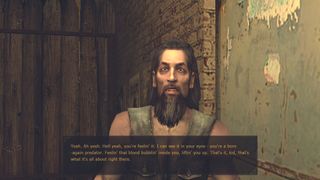
His mod restores entire quest lines relating to the Skyrim civil war and beyond, whilst also bringing in NPCs and locations. For a game already bursting with things to do, the Cutting Room Floor adds a lot that is substantial.
Like Spahl, Arthmoor is no stranger to modding. “By the time I was starting on Cutting Room Floor in earnest, I had several Skyrim mods already completed along with five years’ worth of various projects for Oblivion as well. So I already had the experience behind me to start a project like this.”
It’s not just fans who have taken to modding. Josh Sawyer, project director and lead designer on Fallout: New Vegas at Obsidian, offered a small mod post-release called the Jsawyer Mod that tweaks the game more in line with his original plan for the difficulty. The mod was conceived after the game was completed. “I started to realise that with our development cycles for the DLCs, and due to some technical issues with how the DLCs and main game interact, there were quite a few issues that we wouldn’t be able to officially address.”
Intent on addressing these issues, Sawyer was also keen to balance the game’s difficulty more towards his original vision. “I held back on the base difficulty of Fallout: New Vegas because Fallout 3’s base difficulty was low and I didn’t think it was reasonable to spike up the challenge too much. I wanted to create a more challenging experience in the mod.”
His list of tweaks might seem minor but they make for a vastly different experience when put into practice, and for the curious, represents a chance to play a kind of ‘Director’s Cut’ of the game.
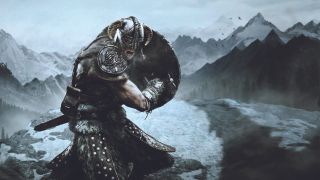
“Most of the changes were easy to make,” Sawyer elaborates. “Bethesda’s tools are terrific for making and editing content. My workflow at home was very similar to what it was as work. The reason the mod is called JSawyer is because our naming convention for local files at work was first initial and last name. So the mod is really just named that way because my work environment at home was the same as at Obsidian. I just wasn’t connected to any source control.”
A talented modder [Xporc] helped me clean up the dirty edits and make the changes I was having difficulty with.”
Josh Sawyer
Sawyer continues, “There were a few things I had difficulty changing and I made a bunch of ‘dirty’ edits in the process. Dirty edits (changes made as a shortcut to get a mod working that may in turn cause problems or conflict with other mods) aren’t really a thing that we had to worry about when working on Fallout: New Vegas through source control, so I wasn’t sure how to deal with them. A talented modder [Xporc] helped me clean up the dirty edits and make the changes I was having difficulty with.”
Restoring missing content is, as you might imagine, no easy task. Exhaustive research is required to make it possible, trawling through every inch of the game’s files. “At first I simply started checking out the game files themselves, a lot of which are in normal text format like those defining items, stats, dialogues or bringing quests together in Python scripts,” Werner Spahl explains of his research for Vampire: The Masquerade - Bloodlines. “Later I began to search the VPK archives [the means by which assets are stored in Valve’s Source game engine] with PakExplorer for unused models, graphics and sounds too.”
For this mod, Spahl didn’t limit his search for information to the game itself. “In case of our biggest restoration yet, the library quest, I contacted Brian Mitsoda [designer and writer on VMB] and he sent me whatever he could remember and we built the quest around his info.”

Not only does completing work left unfinished by the devs take time, sometimes there are few traces of the original assets. Entirely new ones have to be created, in specification with the originally intended idea. “I also asked him about most of the other new maps we created, but sadly he couldn’t help us much, so a lot is improvised,” Spahl says.
In the case of Arthmoor’s Cutting Room Floor mod for Skyrim, the process was straightforward. “At first it was a matter of reconnecting a few dialogue options in quests to restore their flow, then reintegrating some items and other simpler things that had been included with the game but not added to things like the levelled lists. Most of the data was already in place so it wasn’t overly difficult to reconnect a lot of the material.” There were a few exceptions, though. “All of the assets used by the mod were already included in the game, but some did need modification to be completely useful, like the southeast entrance gate to Riften, and the sleeved version of the Stormcloak armour. Since I’m not at all versed in 3D modelling, I had some help from friends and community members to fix those parts up.”
Remember that gate? Blocked off for seemingly no reason at all? Incredible that it took a fan to set things right but still, Arthmoor has done us all a public service.
Of course, even the restoration mods themselves have to cut some content. “I elected to leave out the portions of cut content that referred to the civil war, the real-time carriage rides, and to the battle arena in Windhelm,” explains Arthmoor. “The civil war content had already been restored by ApolloDown’s Civil War Overhaul mod and there would have been considerable overlap between the two projects. The complexity of it would have been fairly overwhelming at the time, and still would be, due to the sheer number of places that quest line covers.”
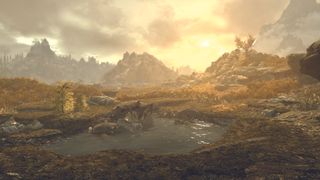
And as someone who laments the cut to a loading screen, it’s a shame about the real-time carriages. “It would also have required extensive edits to a lot of navmesh records on main roads, near high-population areas, which would have resulted in a ton of compatibility issues with other mods and sometimes official DLCs as well,” says Arthmoor. “The Touring Carriages mod does a bit of a better job with this content now, but even it still suffers from the major compatibility problem and limitations of the game’s engine, but a lot of people like it and it works well enough under most conditions.”
The same goes for Werner Spahl’s Unofficial Patch, in which there was simply too much with too little information to go on. Despite the incredible efforts of these fans, there remains a version of these games that is still unseen.
For these talented folks, their mods are just the start. They have their own ideas and more games to work on. “I’ve been playing through some of the backlog of other games I’ve built up, in addition to continuing work on Witanlore—an indie game I’m helping develop for Druid Gameworks,” Arthmoor says. Witanlore is a bear-themed RPG where its Elder Scrolls influences are obvious. It’s available on Steam Early Access. Werner Spahl too has plans for the future. “I’m still busy with the patch and while there is little that we will be able to restore in the foreseeable future, I bet there are still some hidden bugs that could be fixed. Besides doing a bit of patching for the two great free standalone mods The Babylon Project and The Dark Mod, I would like to continue my work on the two rather underdog Deep Shadows games White Gold and The Precursors.”
I can make a heartfelt recommendation for The Dark Mod for anyone after a polished, Thief-esque stealth fix. Spahl is definitely a man of many talents.
What about the developers who worked on these games, how do they feel about the restoring of cut content? Josh Sawyer seems pretty laid back about it all. Speaking on Fallout: New Vegas, he says “I don’t think there’s anything special about the content that was cut. I don’t mind people restoring/extending it, but I also don’t think there’s anything more interesting about what we cut compared to new content that modders could develop.”
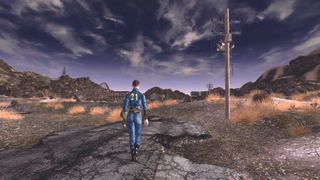
On the community surrounding these demanding projects, Sawyer has more complex feelings. “Participating directly in the modding community also helped confirm that the communities also pressure modders heavily to overextend their scope by accommodating feature requests over time,” he explains. “I suspected this was a problem, which is why I made no concessions to making versions supporting just the base game, supporting various combinations of DLCs, or making changes to my mod to support compatibility with other mods. It’s also why the only official hosting location for my mod is on my website. I can’t control what people do with it once it’s out there, but I can state, ‘This is the only official place to find my mod and if you find it somewhere else, I disavow it.’”
For a group of people who do this solely out of their own passion, unpaid, it is a shame to hear that demands from the community can be overwhelming. Their work is enjoyed by many and in some cases is essential for a functional game experience. Yet their efforts go largely underappreciated and sometimes unfairly criticised. In the comments sections or forums surrounding them, users will bitterly demand one small thing or another, adamant that it would be easy to add despite having no experience themselves. Coping with that pressure is a talent all in itself. Making some legendary mods on top of that is exemplary.
The capability of a few dedicated fans never ceases to amaze and restoration mods are perhaps the most fascinating niche of that scene. What they do is more than just put out lots of new content to play. Through exhaustive research, modders have preserved these pieces of the medium’s history that would otherwise have been lost. They may be small, curious insights into content that may even have been cut for good reason, yet these mysterious artefacts are now preserved in digital space for us to enjoy, free and available to all.
Most Popular

